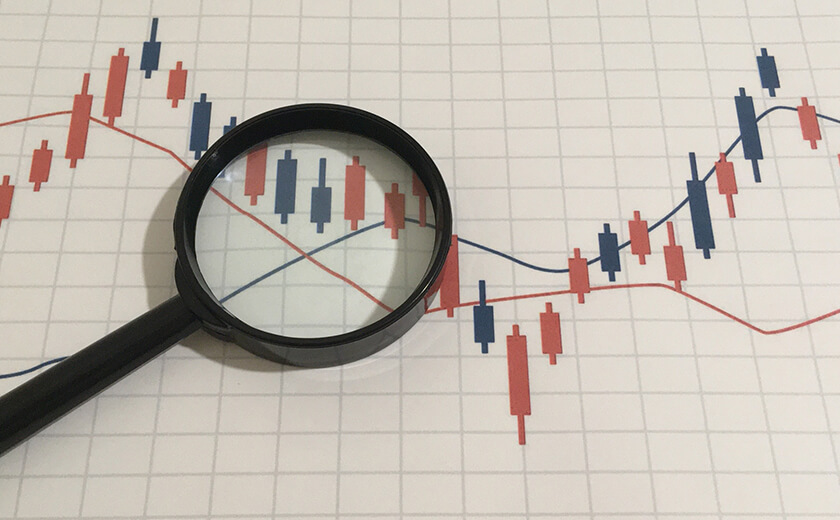When trading in both domestic and overseas FX, the “Spread” always occurs. Ignoring the Spread when trading can lead to unexpected losses. Therefore, always pay attention to the Spread when conducting transactions.
However, many people may wonder, “What exactly is a Spread?” or “What types of Spreads are there?” This article provides a detailed summary of the basics of Spreads, how to calculate them, their types, and points to be aware of regarding Spreads. Please use it as a reference.
Essential knowledge about Spreads you should know

Here, we will explain the basics of Spreads in detail.
A Spread is the difference between the bid and ask prices
A Spread refers to the difference between the bid (buy) price and the ask (sell) price. For example, in an FX trading screen, you might see exchange rates like “Bid: 100.000 yen” and “Ask: 100.003 yen.” However, the bid and ask prices are not the same. Referring to the example above, there is a 0.3 sen difference between the bid and ask prices. This 0.3 sen is what is called the Spread.
What is a 2-way price?
A 2-way price refers to the simultaneous presentation of both bid and ask prices. This term is often mentioned alongside Spreads, so it’s worth remembering.
What are “sen” and “pips” in Spreads?
You may often hear phrases like “The Spread is 0.2 sen” or “The Spread is 0.5 pips.” “Sen” and “pips” are simply units of measurement. Why are two different units used?
There isn’t a particularly significant reason, but generally, for currency pairs involving the Japanese yen, such as USD/JPY, “sen” is used. For currency pairs that do not involve the Japanese yen, such as EUR/USD, “pips” is used. Therefore, you don’t need to overthink it—just remember that “sen” and “pips” are units of currency, and that’s sufficient.
What do “wide” and “narrow” Spreads mean?
Spreads are often described as “wide” or “narrow.” A “wide Spread” means that the Spread is large, such as when the bid price is 100 yen and the ask price is 150 yen. Conversely, a “narrow Spread” means that the Spread is small, such as when the bid price is 100 yen and the ask price is 101 yen.
Spreads occur even if transaction fees are free
Many FX brokers, both domestic and international, advertise “no transaction fees.” Since Spreads are somewhat similar to transaction fees, many people may assume that “no transaction fees = no Spreads.” However, this is not the case, so be cautious.
A Spread is essentially a cost incurred when trading. While it may sound like a transaction fee, strictly speaking, it is not. The mechanism is complex, so we’ll skip the details here, but remember that “Spreads occur even if transaction fees are free.”
Not just FX! Spreads also occur in foreign currency deposits

Spreads occur not only in FX but also in foreign currency deposits. Here, we will explain how much the Spread is for foreign currency deposits and the specific advantages of using FX for asset management compared to foreign currency deposits.
The Spread for foreign currency deposits is around 3 yen
Foreign currency deposits involve converting Japanese yen into foreign currencies with higher interest rates, and upon maturity, receiving the principal along with interest and exchange rate gains in Japanese yen.
When converting yen to foreign currency, the “TTS” rate (the rate for buying foreign currency with yen) is applied, and when converting foreign currency back to yen, the “TTB” rate (the rate for selling foreign currency for yen) is used. While this varies by bank and currency, the Spread between TTS and TTB is generally around 3 yen.
FX has lower Spreads than foreign currency deposits
Although the Spread for foreign currency deposits is relatively low at around 3 yen, FX tends to have even lower Spreads. For example, when trading USD/JPY in FX, the Spread is approximately 0.3 sen. Converting 0.3 sen into yen, it amounts to 0.003 yen. Comparing the 3-yen Spread for foreign currency deposits to the 0.003-yen Spread for USD/JPY in FX, it’s clear how much more cost-effective FX Spreads are.
Advantages of using FX for asset management over foreign currency deposits
One advantage of using FX for asset management over foreign currency deposits is, of course, the lower Spreads. However, beyond that, FX offers the benefit of earning interest daily. While foreign currency deposits also accrue interest, it can only be received upon maturity.
With FX, as long as you hold a currency, interest—referred to as “swap points”—is deposited into your account daily. Therefore, if you prefer not to be tied down until maturity, FX is recommended for asset management.
A breakdown by type! How to calculate Spreads

Here, we will explain how to calculate Spreads based on their types.
Calculation method for cross-yen currency pairs
Cross-yen currency pairs refer to currency pairs like USD/JPY or EUR/JPY, which involve “Japanese yen × foreign currency.” The calculation method for cross-yen currency pairs is as follows:
(Sell price – Buy price) × Number of traded units = Spread
Let’s calculate an example. Suppose you purchase 10,000 units of USD/JPY. The buy price is 100.000 yen, and the sell price is 100.005 yen. In this case, the calculation would be:
(100.005 – 100.000) × 10,000 units = 50 yen
In this example, trading under the above conditions would result in a Spread of 50 yen.
Calculation method for foreign currency pairs
Foreign currency pairs refer to pairs like EUR/USD or GBP/USD, which involve “foreign currency × foreign currency.” The calculation method for foreign currency pairs is as follows:
(Sell price – Buy price) × Number of traded units = A
A × Exchange rate = Spread
Let’s calculate an example. Suppose you purchase 10,000 units of EUR/USD. The buy price is 1.10000 USD, the sell price is 1.10005 USD, and 1 USD equals 100 yen. In this case, the calculation would be:
(1.10005 – 1.10000) × 10,000 units = 0.5 USD
0.5 USD × 100 yen (USD price) = 50 yen
Under the above conditions, trading would result in a Spread of 50 yen. When calculating Spreads for foreign currency pairs, remember to convert the result into Japanese yen at the end.
Spreads can be broadly divided into three types.

Here, we will explain the types of Spreads in detail.
Completely Fixed Spread
A completely fixed Spread is a Spread that does not fluctuate under any circumstances. Since it is completely fixed, it is not affected by sudden market changes or trading volume liquidity. However, completely fixed Spreads are favorable for traders, so there are currently very few FX companies, both domestic and international, that offer completely fixed Spreads.
Principally Fixed Spread
A principally fixed Spread means that, in principle, you can trade at the Spread offered by the FX company, but the Spread may fluctuate under certain circumstances. Since it is not entirely fixed, it can be affected by sudden market changes or trading volume liquidity. Most FX companies, both domestic and international, currently offer principally fixed Spreads.
Variable Spread
A variable Spread, as the name suggests, is a Spread that constantly fluctuates. Variable Spreads tend to narrow during times of high trading volume, such as in the morning or afternoon, but widen during times of low trading volume, such as early in the morning.
Be Careful! Points to Note About Spreads

Here, we will explain the points to note about Spreads.
Spreads vary by company
Spreads are not fixed, such as “USD/JPY = 0.3 sen,” and they differ depending on the FX company. While there is not a significant difference between domestic FX and overseas FX, overseas FX tends to have wider Spreads. However, overseas FX offers advantages that domestic FX does not, such as more comprehensive support and higher maximum leverage.
Spreads vary by currency
Spreads also differ depending on the currency. Below is a table summarizing the average Spreads for overseas FX.
| Currency Pair | Average Spread |
|---|---|
| USD/JPY | 0.2 sen |
| EUR/JPY | 0.3 sen |
| GBP/JPY | 0.8 sen |
| AUD/JPY | 0.6 sen |
| NZD/JPY | 1.2 sen |
| ZAR/JPY | 1 sen |
Three situations where Spreads tend to widen

Three situations where Spreads tend to widen
– Before and after the release of major economic indicators
– When unexpected events occur
– When market liquidity decreases
In particular, Spreads tend to widen significantly before and after the release of major economic indicators such as employment statistics or FOMC announcements. When economic indicators are released, exchange rates can fluctuate greatly, presenting opportunities to aim for significant profits.
However, Spreads can also widen considerably, which may result in losses even if you capture a large price movement. Therefore, when trading during the release of major economic indicators, be sure to pay close attention to the Spread.
Pay attention to Spreads when trading
Even beginners in overseas FX can increase their chances of making a profit by learning about the types of Spreads and how to calculate them. Focus on Spreads and find a trading style that suits you.
The Spreads of IS6FX are variable.
>Click here for detailed information and the Spread table.
